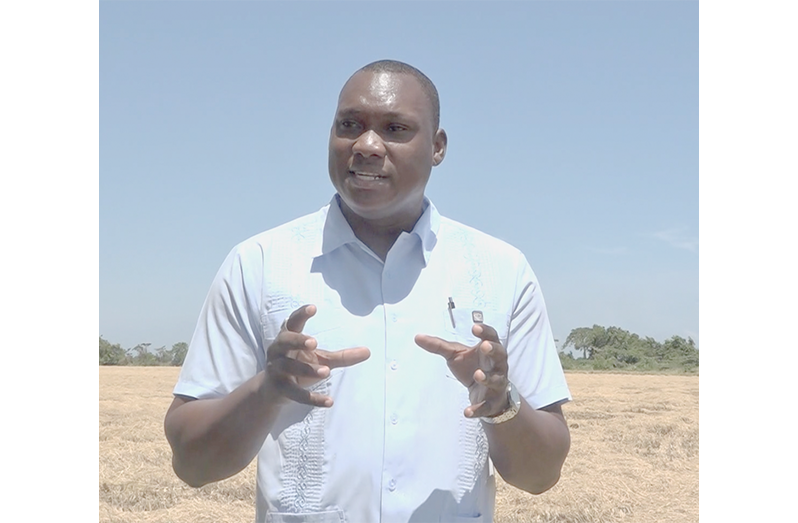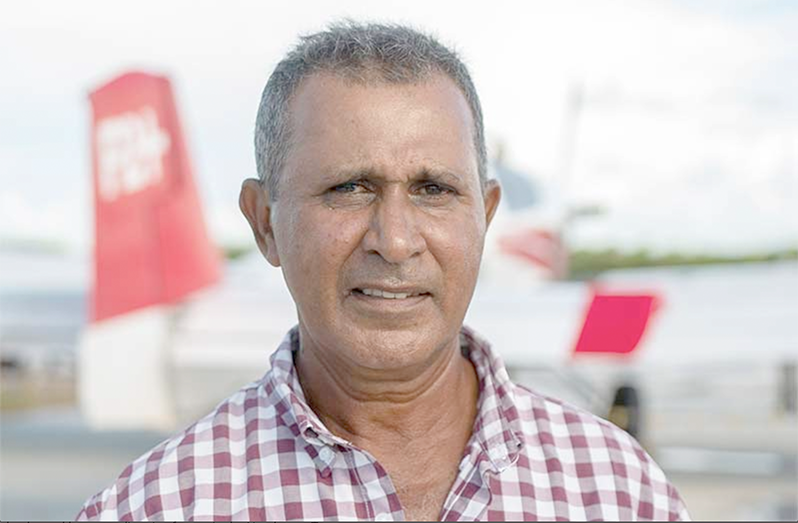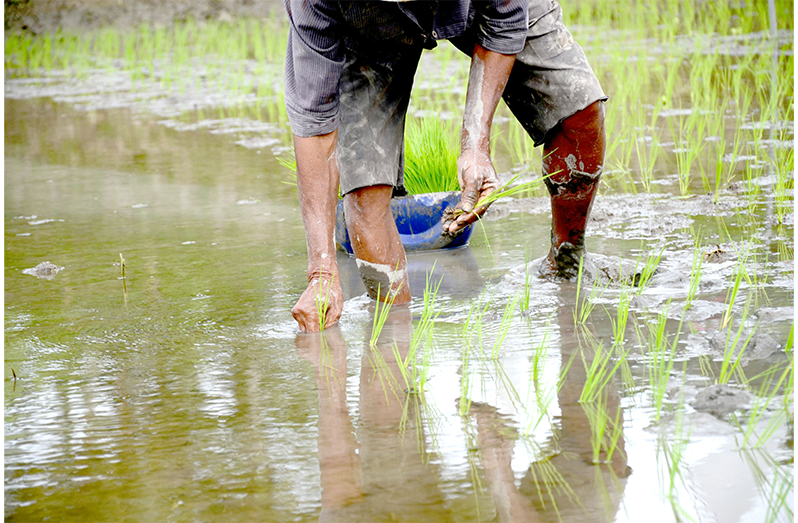FOR countless rice farmers across Guyana, every rooted stalk carries a risk, with climate change intensifying droughts, floods and erratic weather patterns that are no longer occasional challenges, but now constant companions.
But though uncertainty looms, farmers for the time now have access to crop insurance, providing them with hope and a sense of security to keep planting.
“This insurance is a parametric insurance; this basically means that this insurance is [based] on weather parameters, mainly excess rainfall and drought conditions. This insurance will rely solely on the amount of rainfall or the lack thereof in order to provide payout to farmers, explained Travis Pilgrim, an extension supervisor at the Guyana Rice Development Board (GRDB), during an interview with the Guyana Chronicle.

Launched in July, through a collaboration among the Ministry of Agriculture, UPL Costa Rica, Philip Morris International, and the GRDB, the initiative comes at a time when farmers need it most, having faced increasingly unpredictable conditions in recent years.
Guyana typically experiences two wet seasons and two dry seasons because of its equatorial location, a longer wet season from May to June, and a shorter one from late November to January. But recent reports from the Hydrometeorological Service show extended dry periods resembling droughts, and in other cases, intense rainfall that has caused widespread flooding.
“This crop insurance comes at a time in Guyana when farmers would most benefit from it because with these unpredictable conditions, farmers would now have this sense of security that they have an insurance that if the worst-case scenario comes and they have excess rainfall or dry conditions, they would be able to feel secure knowing that their crop on the ground is insured. And this comes at no cost to the farmers,” Pilgrim said.
BUT HOW DOES IT WORK?
To date, over 4,000 rice farmers have registered for the insurance, representing about 80 per cent of the country’s rice-farming population. Pilgrim noted that registration will be continuous for each crop cycle.
Ten new weather stations will be installed across major rice-growing regions and integrated with the existing Hydromet network, creating a more accurate and comprehensive weather-monitoring system.
The data collected will determine whether a region has experienced rainfall outside of the normal threshold. If so, farmers in that area will be eligible for payouts to help them return to their fields.
“There is a sense of comfort now,” said Amernuth Kiraitpal, a rice and cattle farmer from Mahaica, as he recalled the severe flooding in 2021.
“Farmers in general would have suffered tremendously in either way when it went beyond its average. In many cases, many farmers would have been losing crops to flood or drought and with no help coming from any insurance around them time. It was a tremendous challenge for farmers to get back into the new crop.”
At the start of each registration period, extension officers visit farming regions to conduct outreaches and collect basic bio-data, including banking information.
Once there is verified loss due to drought or flood, payouts are triggered and deposited directly into farmers’ bank accounts.
“As farmers, we have to go back to the crop. We are hoping that we can go back to the crop and bring through the crop without having to interfere with the insurance, but the guarantee of going into the crop, or the comfort of going into the crop knowing that the insurance is with us this time … it’s a boost for me and my farms,” Kiraitpal added.

NEW TARGETS
Despite climate pressures and recent global gluts in the rice market, Guyana continues to record strong production gains. The country is set to produce 820,000 metric tonnes of rice.
“This is a very important industry; we not only have to maintain it, but we have to expand it. Our objective in the coming years from now is to produce a million tonnes of rice, so we want Guyana to be one of the main food-producing countries in the region,” Agriculture Minister Zulfikar Mustapha said.
In fact, the sector saw a 13.9 per cent growth during the first half of 2025. Data from GRDB shows that 410,194 tonnes of rice equivalent were produced between January and June 2025, up from 362,030 tonnes for the same period last year. Officials attributed the increase largely to favourable weather conditions and consistent yields, with the first crop of 2025 achieving an average of 6.6 tonnes per hectare, the same as in 2024.
The country’s production has seen a steady increase over the past four years. In 2020, the first crop averaged at 5.7 tonnes and by 2024, it had increased to 6.6 tonnes per hectare.
This incremental increase in rice production has been ongoing since 2021, when production was 559,789 tonnes. In 2022, it increased to 610,595 tonnes, and 653,706 tonnes in 2023.



.jpg)








